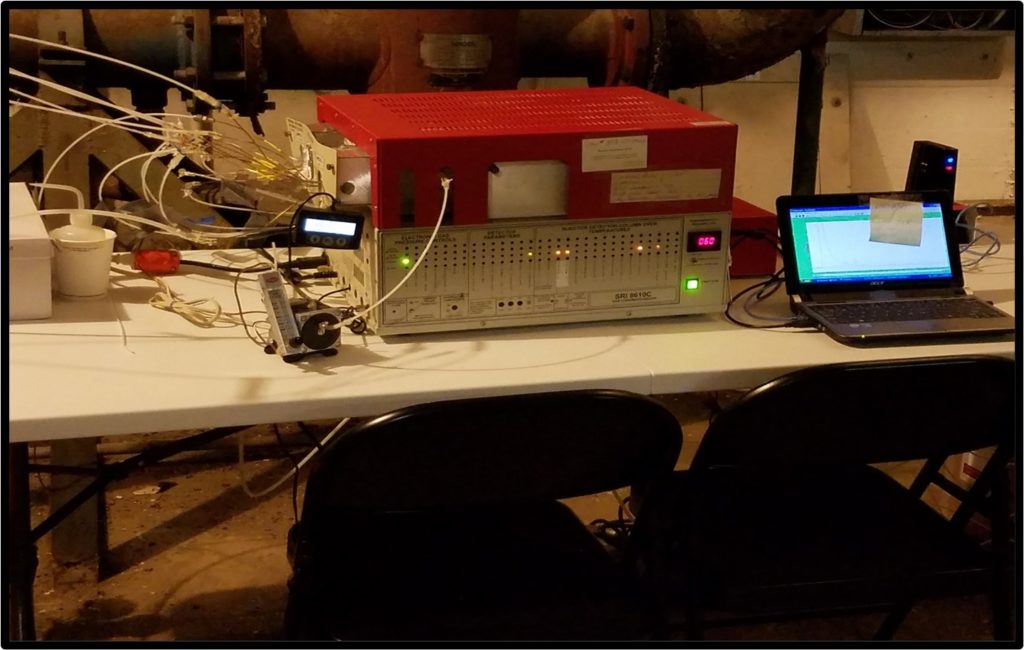Typical grab sampling or integrated sampling methods used for indoor air monitoring to evaluate vapor intrusion risks may not tell you the whole story. They represent only a static snapshot of conditions, or an average value of contaminant concentrations over a certain period of time.
What’s the risk in that? Sampling results may be misleading. Important fluctuations and trends in concentrations over time may be missed. Regulators may require additional mobilizations and sampling to demonstrate compliance. All of this increases your time and cost.
If you are struggling with environmental investigation involving indoor air evaluations on a site impacted by volatile organic compounds, you may want to consider continuous air sampling for evaluating indoor air quality and potential health risks inside site buildings. In this blog, I’ll describe four benefits of continuous air sampling and share a case study of a former dry cleaning site turned print shop dealing with tetrachloroethylene (PCE) in indoor air.
Continuous air sampling provides hundreds to thousands of individual air sample results during a single mobilization. This is possible by placing a portable gas chromatograph (GC) inside a building and programing it to automatically collect and analyze samples from multiple locations. This approach provides four benefits compared to grab and integrated sampling.
Benefit 1: Identify Contributing Sources
Collecting significantly larger datasets from throughout your site allows for quicker identification of source areas and temporal changes in concentrations caused by site operations or other conditions. This will help you refine your conceptual site model and confidently demonstrate your understanding of site conditions to regulators.
Benefit 2: Mitigate Risk
The identification of sources enables you to implement the appropriate remedial or mitigative actions. These could be engineering, process, or other controls to reduce risk.
Benefit 3: Confirm Corrective Actions Are Effective
Continuous real time data can show you if your remedial actions are effective or if enhancements to your strategy are necessary. The ultimate goal being to reduce or eliminate health hazards to receptors and regulatory non-compliance.
Benefit 4: Reduce Cost
Continuous air sampling efficiently analyzes significantly more samples during one day of testing. This typically leads to a quicker, more accurate, and less expensive understanding of indoor air conditions at your site at a fraction of the cost using the more traditional grab and integrated sampling methods.
A Case Study
A print shop in Phoenix, Arizona needed to identify and address tetrachloroethylene (PCE) and trichloroethylene (TCE) in indoor air. Read the case study to see how continuous air sampling uncovered both vapor intrusion and operational activity impacts to indoor air quality.

Continuous Air Sampling for Tetrachloroethylene Vapor Intrusion Investigation
Continuous air sampling can add significant value to your indoor air and soil vapor intrusion investigations at a competitive cost. Multiple datapoints per day at multiple locations are used to develop a more insightful understanding of indoor air conditions at your site. This understanding may expedite the development of effective remedial or mitigative actions and ultimately site closure, resulting in overall cost savings.
If you’re struggling with potential vapor intrusion issues, contact me to discuss an air quality sampling protocol specific to your needs.

ABOUT THE AUTHOR
Brian R. Waggle, RG
Senior Hydrogeologist
Hargis + Associates, Inc.
bwaggle@hargis.com
LinkedIn: https://www.linkedin.com/in/brian-waggle-92390385/
Mr. Waggle is a Senior Hydrogeologist in H+A’s Mesa, Arizona office. He has over 30 years of professional experience in environmental consulting, specializing in soil, soil gas, and groundwater investigation and remediation.
